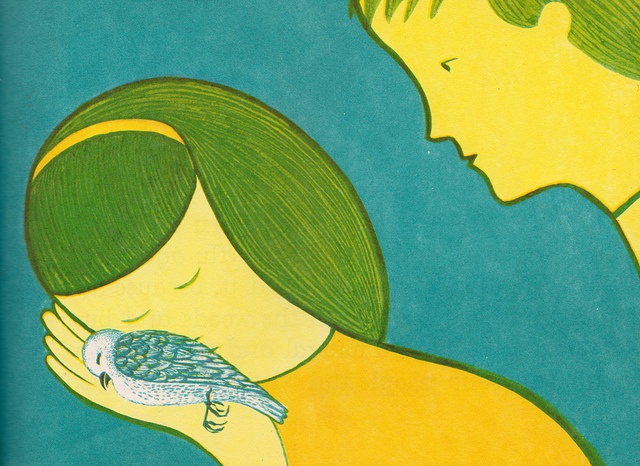 Having a mom who is a psychologist, I have been familiar with children’s books about death and grief since I was very young. I believe they are crucial in helping kids understand the complex and confusing emotions that often occur with death and the grieving process. The Dead Bird by Margaret Wise Brown—the author most notably known for the classic Goodnight Moon—has always been one of my favorite books about death and the grieving process from the time I read it for the first time as a young child, to when I reread it now. Margaret Wise Brown uses a simple yet effective method of combining beautiful drawings done by Remy Charlip with her concise and straightforward sentences that refrain from using the euphemisms that many authors use when it comes to the topic of death and the grieving process.
Having a mom who is a psychologist, I have been familiar with children’s books about death and grief since I was very young. I believe they are crucial in helping kids understand the complex and confusing emotions that often occur with death and the grieving process. The Dead Bird by Margaret Wise Brown—the author most notably known for the classic Goodnight Moon—has always been one of my favorite books about death and the grieving process from the time I read it for the first time as a young child, to when I reread it now. Margaret Wise Brown uses a simple yet effective method of combining beautiful drawings done by Remy Charlip with her concise and straightforward sentences that refrain from using the euphemisms that many authors use when it comes to the topic of death and the grieving process.
“the limp bird body grew stiff, so they couldn’t bend its legs and the head didn’t flop when they moved it.”
The Dead Bird starts out with the children in the story discovering a dead bird. As Wise Brown plainly puts it, “The bird was dead when the children found it.” Interestingly enough, rather than shying away from technical details about the bird’s death, Wise Brown elaborates on how the children were able to determine how long the bird had been dead and how they knew it was dead with details about the physical and biological signs of death, such as the body going from warm to cold where “the limp bird body grew stiff, so they couldn’t bend its legs and the head didn’t flop when they moved it.”
In order to explain such a heavy topic to children, The Dead Bird divides itself between pages with short spurts of texts and vibrantly colorful illustrations. These illustrations demonstrate visual representations of the straightforward text—a way to aid kids in understanding everything that happens during death and the grieving process.
After the children grasp the reality that the bird is dead and the finality of this situation, they decide to honor the bird as one would honor a human loved one who has died with a burial and funeral where they can “sing to it the way grown-up people did when someone died.” Wise Brown details the flowers the children use to wrap the bird up and surround the grave as she names “sweet-ferns…grapevines…white violets and yellow star flowers.” Once the bird is placed in the grave and the flowers are set just right, the children sing a song and this marks a turning point for them because the grief they feel for the loss of the bird blossoms into full bloom. Wise Brown summarizes the moment in twenty simple words, “Then they cried because their singing was so beautiful and the ferns smelled so sweetly and the bird was dead.” The Dead Bird maintains that it is essential to remember and honor lost loved ones even after the burial and funeral is at an end.
“Then they cried because their singing was so beautiful and the ferns smelled so sweetly and the bird was dead.”
This book reminds us that the grieving process is universal across species. Whether it is a human loved one or a beloved pet or animal who have died, we should honor and remember them in ways that best suit them. The best examples would be funerals, memorial services, or celebrations of lives, which can be customized and individualized in allowing loved ones of those lost to gather together as a community and grieve together while mourners demonstrate their love. Margaret Wise Brown’s The Dead Bird helps children understand the grave importance of these traditions.
More SevenPonds children’s book reviews:

 The Dead Bird by Margaret Wise Brown
The Dead Bird by Margaret Wise Brown



 Our Monthly Tip: Make an “In Case of Death” File to Ease Loved One’s Grief
Our Monthly Tip: Make an “In Case of Death” File to Ease Loved One’s Grief
 Passing of Beloved Comedian Births a New Comedy Festival
Passing of Beloved Comedian Births a New Comedy Festival















